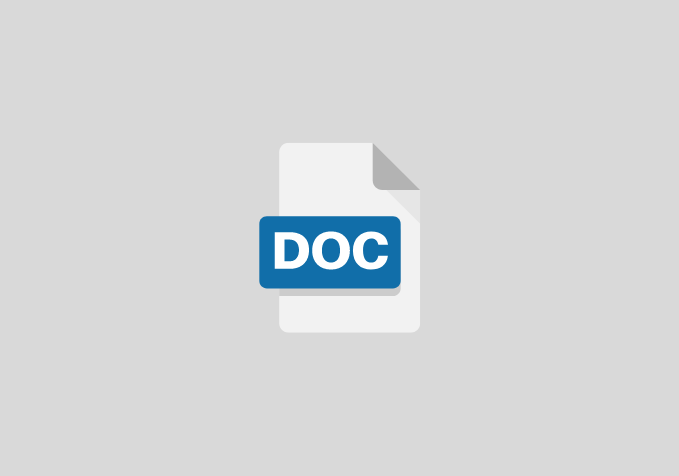The Impact of Training and Development in a Marketing Company: A Case Study of Coca-Cola Multinational Company in Nigeria
Chapter One
Research objective
The main objective of this study is to investigate the impact of training and development in a marketing company.
The specific objectives are:
- To investigate how effective the employee training and development is for the organization.
- To discuss the current practices in organizations for training and development that are supposed to contribute to the enhancement of the employees’ skills and employee performance
- To evaluate the views of management personnel on effective employee training and development program as enhancing the employee performance.
- To discuss the different training methods used by the organization
- To evaluate the different methods used by the organization in selecting the employees for training
CHAPTER TWO
REVIEW OF RELATED LITERATURE
Introduction
This chapter discussed training and development concepts and definitions, organization’s need for training and development, identification of training needs, training and transfer of training, training policy, performance appraisal and training and development, training techniques (methods) used, evaluation of training and development, benefits of training and development and relationship between training and development and employee performance.
This chapter is structured under three basic subheadings, which include:
- Conceptual review
- Theoretical framework
- Empirical review of related studies
Conceptual review
Concept of training and development
Well trained employees are key to a business’ success. It has been shown that the most successful and productive employees are those who have received extensive training and development. These groups of employees can be described as the “cream of the crop” that often has the strongest stake in an organization’s future. According to Dessler (2008), even when employees are carefully selected, it does not still guarantee totally acceptable performance from the employees. This is because while the potential of an employee to perform is one thing, performing is another and therefore an employee with a high potential to perform may not still perform his job if he does not go through training and development.
Training
A very important area of the Human Resource Management function is training and development for the effective use of human resources. Training is the acquisition of knowledge, skills, and competencies as a result of the teaching of vocational or practical skills and knowledge that relate to specific useful competencies. In this study training is viewed as a means of not only fostering the growth of the individual employee but as an integrated part of organizational growth.
Ngirwa (2009), defined training as a “learning process in which employees acquire knowledge, skills, experience and attitudes that they need in order to perform their job better for the achievements of their organizational goals”. This definition shows the bridge between job requirements and employee present specifications. Training can therefore be seen as a systematic process of increasing the knowledge and skills of the staff for doing a specified job by providing a learning experience.
Armstrong, (2008), defined training as the planned and systematic modification of behavior through learning events, programs and instructions, which enable individuals to achieve the levels of knowledge, skill and competence needed to carry out their work effectively. This definition means that for any organization to succeed in achieving the objectives of its training program, the design and implementation must be planned, done systematically and tailored towards enhancing performance and productivity. Also training gives the employee or trainee the required skills, technical knowledge and competencies needed to perform his or her present job effectively or to prepare the employee to fit a higher job involving higher responsibilities.
Training not only develops the capabilities of the employee but sharpen their thinking ability and creativity in order to take better decision in time and in more productive manner (David, 2006). Moreover it also enable employees to deal with the customer in an effective manner and respond to their complaints in timely manner (Hollenbeck et al., 2004). In effect therefore through training, the employee is able to take better decisions that culminate to the success of the organization. Also time is used judiciously when it comes to taking decisions by well-trained employee in an organization.
References
- Abba, T. and Dawha E. M. K. (2009). Assessment of Personnel Training Needs in the Ibrahim Babangida Library, Federal University of Technolo., Yola, Nigeria. ACCA study text, (2003). Managing people, papers 1 and 2
- Agnes.M, (2010) a case study of perceived effectiveness of training and development on Performance of in flight attendants in Kenya Airways Limited. Unpublished MBA project University of Nairobi.
- Armstrong, M. & Stephen, and T. (2005). A handbook of Management and Leadership: A guide to managing for results. Kogan Page ltd.
- Asare-Bediako, K. 2008. Professional Skills in Human Resource Management 2nd ed.
- Babajide (2015). New conceptualizations of practice: Common principles in three paradigms suggest new concepts for training. Psychological Science, 3, 207-217.
- Bass, B. M. & Vaughan, J. A. (1969). Training in Industry: The Management of Learning. London: Tavistock Publications.
- Beach et.al (2015). From adaptation to adaptive capacity and vulnerability reduction. In: Climate Change, Adaptive Capacity and Development. Imperial College Press, London Britain.
- Cole, G. A. (2004). Management Theory and Practice 6th ed. Thomson Learning contemporary perspective, 7th edition, Pitman publishing, 128 long Acre, London.
- David Muhiharisen and Paul Kersey (2004), Human Resources management a
- Dessler, G. (2008). Human Resource Management 11th ed. Pearson International Edition.
- G.A Cole, (1997). Personnel management, 4th edition Ash ford Color press, Go sport, Great Hall.
- Heath field, S. M. (2012). Training: Your investment on people development and retention. Hill
- Ivancevich, J. M. (2010), Human Resource Management 8th ed. Boston: Irwin McGraw-lxxviii
- Monappa, A & Saiyadain, M. (2008). Personnel Management 2nd ed. Tata McGraw-Hill,


